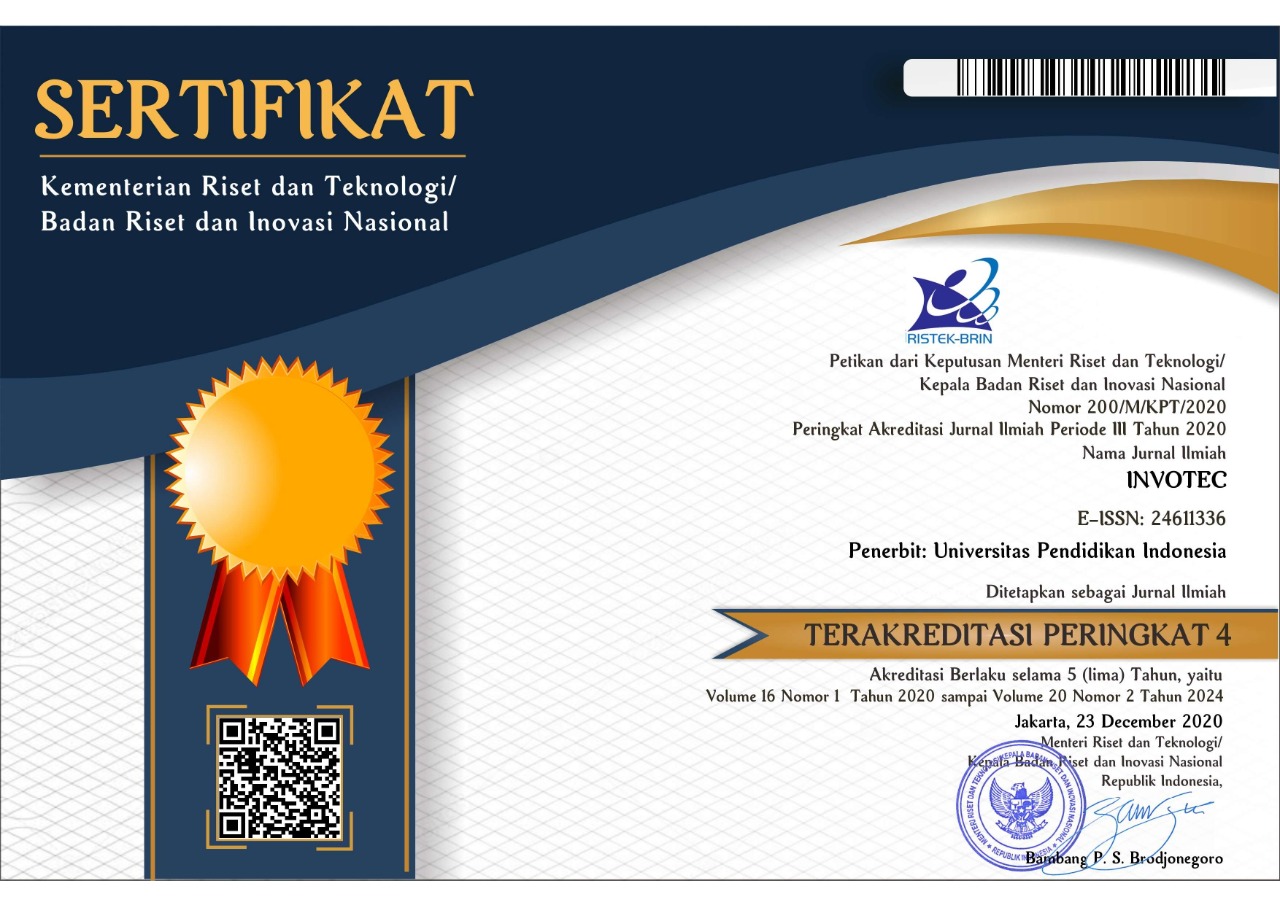RELEVANSI KURIKULUM SMK BERBASIS INDUSTRI KREATIF DENGAN METODE EXTRAPOLATION AND THE ECONOMETRIC APPROACH
Abstract
Full Text:
PDFReferences
Anggraini, N. 2008. “Industri Kreatif”. Jurnal Ekonomi, XIII(3),hlm.144-151.
Amankwah, E. and Swanzy, P. 2011. “The Role of Stakeholders in Building Adequate Competences in Students for the Job Market”. International Journal of Vocational and Technical Education,Vol.3(8),pp.107-112.
Badan Penelitian dan Pengembangan Propinsi Jawa Tengah. 2008. Laporan Penelitian Tentang Keter kaitan Pendidikan dan Penyediaan Lapangan Kerja di Jawa Tengah .Semarang: BPPP Jawa Tengah
Canavan B & Doherty R. 2005. Technical Curriculum in Scotland — Fit for Purpose? PATT-15 April 18-22, 2005 Technology Education and research: Twenty Years Retrospect.
Departemen Perdagangan RI. 2009. Studi Industri Kreatif Indonesia 2009. Hasil Konvensi Pengembangan Ekonomi Kreatif 2009-2015 Yang Diselenggarakan Pada Pekan Produk Budaya Indonesia 2009. JCC, 4 -8 Juni 2009
DuPre, C. and Williams, Kate. 2011. “Undergraduates’ Perceptions of Employer Expectations”, Journal of Career and Technical Education, Vol.26(1),pp.819.
Finch C.R and Cruncilton J.R .1992. Curriculum Development in vocational and Technical Education ,Planning, Content, and Implementation . Fourth Edition . Allyn and Bacon.Boston London.
Hodge K.A. and Lear J.L. 2011. “Employment Skills for 21st Century Workplace: The Gap Between Faculty and Student Perceptions”. Journal of Career and Technical Education, Vol.26,No.2,pp.28-41.
Keiser C, Jonathan, et.all . 2004. “Technical Education Curriculum Assessment” Journal of Vocational Education Research, Vol.29(3), pp.181-194.
Komla M.E and Ansah C.O.2011.”Linking Tertiary Institutions to industries: Evidence from the Vocational and Technical Education Departement of University of Cape Coast. International Journal of Vocational and Technical Education, Vol.2(5),pp.53-60.
Matthew O. A and Ede E.O. 2010. “Integration of New Technological Innovations in automobiles into the curriculum for Nigerian Technical College Programes”. International Journal of Vocational and Technical Education, Vol.2(5),pp.89-94.
Miller D. M. 1985. Principles and A Philosophy for Vocational Education. The National Center for Research in Vocational Education The Ohio State University. Columbus, Ohio 43210.
Munandar, U. 1999. Pengembangan Kreativitas Anak Berbakat. Jakarta.Rineka Ci pta.
GTZ. 2009. Sustainable Economic Development Supported by Improving Technical and Vocational Education : Minutes of Meeting on the Mission’s Outcome. GTZ Annual Report 2009.
Oloruntegbe, K.,O.; et.al. 2010. “Reconceptualization of African Vocational and Technological Education for Emergent Globalization, Relevance and Suistainable Economic Developtment “.International Journal of Vocational and Technical Education, Vol.2(4),pp.55-61.
Pangestu, M.,E. 2008. Pengembangan Ekonomi Kreatif Indonesia 2025. Departemen Perdagangan RI.
Sanjaya,W. 2008. Kurikulum dan Pembelajaran .Teori dan Praktik Pengembangan Kurikulum Tingkat Satuan Pendidikan (KTSP). Jakarta: Kencana Predana Media Group.
Renstra Kemendi knas 2010-2014. Kementeri an Pendidi kan Nasi onal
Tim Ahli Penyelarasan Pendidikan dan Dunia Kerja. 2011. Kerangka Kerja Penyelarasan Pendidikan dengan Dunia kerja .. Sosialisasi Program Penyelarasan Pendidikan dengan Dunia Kerja Kopertis Wilayah VII.Surabaya, 23 Desember 2011.
Undang-Undang Sistem Pendidikan Nasional No.20 Tahun 2003.
DOI: https://doi.org/10.17509/invotec.v9i1.4882
Refbacks
- There are currently no refbacks.
Copyright (c) 2017 Innovation of Vocational Technology Education
This journal provides immediate open access to its content on the principle that making research freely available to the public supports a greater global exchange of knowledge.

This work is licensed under a Lisensi Creative Commons Atribusi-BerbagiSerupa 4.0 Internasional.


